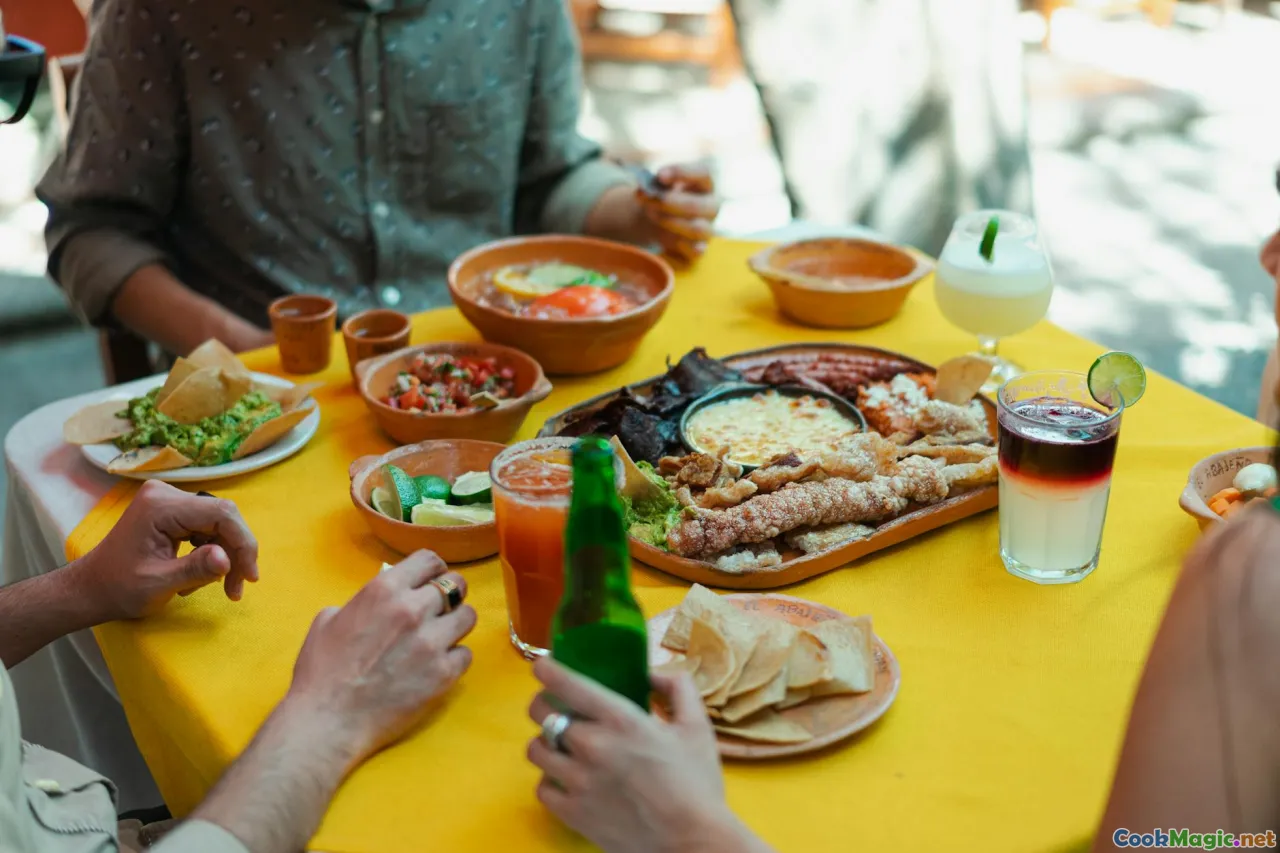Croatian Street Food: A Culinary Journey
8 min read Discover the vibrant world of Croatian street food, where history, culture, and bold flavors converge in a sensory culinary adventure. April 25, 2025 05:55
Croatian Street Food: A Culinary Journey
Imagine walking through narrow, winding streets of a Dalmatian town at sunset, the air thick with the aroma of sizzling meats, freshly baked bread, and fragrant herbs. The sounds of chatter and laughter mingle with the crackle of grills and the clatter of stalls. Welcome to Croatia — a country where street food is not just sustenance but a vibrant expression of history, tradition, and community.
An Introduction to Croatian Street Food: More Than Just a Snack
Croatia’s street food scene is a kaleidoscope of flavors, textures, and stories. Unlike the polished menus of fine dining establishments, street food in Croatia embodies authenticity and regional identity. It is a reflection of centuries of cultural influences — from the Roman, Venetian, Ottoman, to Central European traditions — woven into every bite.
For locals and travelers alike, street food is an accessible gateway into understanding Croatian life. It’s quick, delicious, and deeply rooted in family recipes passed down through generations. Whether it’s a quick bite from a bustling market stall or a leisurely snack by the seaside, Croatian street food offers a sensory journey that captures the essence of this diverse country.
The Cultural and Historical Tapestry
Croatian street food is as much about history as it is about flavor. Coastal towns like Dubrovnik, Split, and Zadar have bustling markets where vendors serve up dishes that have survived centuries of change.
For instance, the influence of Venetian traders is evident in the use of fresh seafood and aromatic herbs, while Ottoman legacies introduce spices and grilled meats. Meanwhile, inland regions favor hearty, rustic fare that reflects Central European culinary traditions.
This melting pot of influences creates a unique culinary mosaic, allowing visitors to taste different eras of Croatian history in every mouthful.
Signature Dishes: A Closer Look
1. Ćevapi
No exploration of Croatian street food is complete without ćevapi — small, juicy sausages made from minced meat (beef, lamb, or pork), seasoned with garlic, paprika, and herbs. Grilled over open flames, they develop a smoky char, served traditionally with flatbread (lepinja), chopped onions, and a side of kajmak (a creamy dairy spread). The aroma alone is intoxicating, inviting passersby to indulge.
2. Fritule
Sweet bites of Croatian street food, fritule are deep-fried dough balls infused with raisins, lemon zest, and a hint of brandy. Dust them with powdered sugar and you have a warm, fragrant treat that evokes childhood memories and festive markets.
3. Pasticada and Burek
While traditionally more of a dish than a street snack, small bites of burek — flaky pastry filled with cheese, spinach, or minced meat — are common in street stalls. Pasticada, a slow-cooked beef stew, is often served in portable containers for a hearty, on-the-go meal.
4. Seafood Delights
In coastal regions, street vendors serve up freshly grilled calamari, sardines, and octopus salads, capturing the freshness of the Adriatic. The smell of charred seafood mingling with sea breeze is an undeniable part of the Croatian street food experience.
5. Grilled Skewers and Sausages
Larb-like kebabs, grilled sausages, and pljeskavica (a large grilled meat patty) are staples at seaside festivals and city markets, offering quick, satisfying bites.
The Places to Experience Croatian Street Food
Markets and Festivals
- Split’s Pazar Market: A bustling hub where vendors offer everything from fresh produce to grilled specialties.
- Dubrovnik’s Stradun Promenade: Lined with stalls selling seafood and pastries, perfect for an afternoon stroll.
- Zagreb’s Dolac Market: An iconic spot to taste local cheeses, cured meats, and baked goods.
- Festivals: The Dubrovnik Summer Festival and Split Food Festival showcase regional delicacies and culinary traditions.
Small Towns and Coastal Villages
In less touristy spots, street food remains authentic and unpretentious. In towns like Trogir and Šibenik, you’ll find family-run stalls serving recipes that have been in their families for generations.
The Experience: Tasting, Savoring, Connecting
Eating Croatian street food is an immersive experience. It’s about more than just flavors — it’s about the sights, sounds, and stories that come with every bite.
Picture yourself sitting on a weathered wooden bench, watching fishermen unload their catch, the smell of grilled fish mingling with the salty sea air. Or wandering through a lively market, hearing vendors call out, offering samples of their homemade ajvar (pepper spread) and local wines.
Personal anecdote: During my first visit to Split, I found myself at a small stall near the Riva promenade. The vendor, an elderly man with a warm smile, handed me a skewer of ćevapi wrapped in warm lepinja. The smoky aroma, the burst of savory juices, and the lively chatter around made me feel like I had stepped into a living, breathing Croatian story.
Why Croatian Street Food Matters
Croatian street food is more than just a quick meal — it’s a cultural expression, a way for communities to connect and share their heritage. It preserves centuries-old recipes, adaptions to local ingredients, and social traditions.
For the traveler, it offers an authentic taste of Croatia’s multifaceted identity. For the local, it’s a source of pride, a daily celebration of their culinary roots.
Final Thoughts: A Flavorful Invitation
Exploring Croatian street food is a journey into the heart of this beautiful country. It’s an invitation to taste history, to embrace community, and to savor the bold, diverse flavors that define Croatia’s culinary landscape.
So next time you find yourself wandering the sunlit streets of Dalmatia or the bustling markets of Zagreb, pause to indulge in a street-side snack. Because in Croatia, every bite tells a story — and it’s a story worth savoring.
Embark on this culinary adventure, and let Croatia’s street food leave an indelible flavor in your memory.









